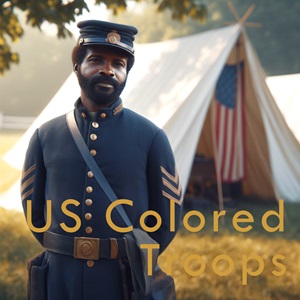Study Areas
Enslavement
Anti-Slavery
Free Persons of Color
Underground Railroad
The Violent Decade
US Colored Troops
Civil War
Year of Jubilee (1863)
20th Century
|

The Civil War affected the African
American community in central Pennsylvania in many ways. Confederate
invasions caused upheaval in all communities as free citizens,
former fugitive slaves, and "contrabands," slaves who
fled north as Union troops liberated their homes, scrambled to
get away from advancing rebels who they feared would capture them
and take them south into slavery.
Others contributed to the war effort in many ways: by raising aid for
soldiers, working in camps and hospitals, recruiting men for the new
African American regiments, and by enlisting to serve in those regiments.
These pages will document the varied contributions of African Americans to
the war effort in central Pennsylvania.
Bridgewater Home and School
State School Home for Colored Soldiers' Orphans
|
 Pennsylvnia became a leader in establishing "School-Homes" for the orphans of soldiers and sailors who died during the Civil War, opening several in 1864 while war was still raging. Those officially designated schools, however, were intended for white students. No provision was made to care for and educate hundreds of orphans of Black soldiers and sailors.
Concerned African American citizens of Philadelphia, spearheaded by members of the Freedman's Aid Society, worked to draw attention to the inequitable system. They raised over $20,000 to purchase the old Bristol College property about sixteen miles outside of the city. The grounds had most recently been used as a Civil War hospital and were deemed well suited to the education and lodging of several hundred orphans of Black servicemen. They secured the approval of the Superintendent of Orphans Schools, and in June 1868, four years after the opening of School-Homes for orphans of white soldiers, began enrolling their first students.
The school quickly filled, and after a suitable Principal was found who could cope with the many challenges of caring for and providing a quality education for several hundred students on meager state funding, the school became a model of the Orphan School system. Declining enrollment, however, driven by the aging-out of orphans over the decade, led to the school's eventual closing in 1879.
The pages and documents below illustrate the challenges and the promise of the system. Initial rosters of students, administrators and staff are included, along with circulars and letters pleading for additional funding.
Transcribed Documents and Extracts
|



